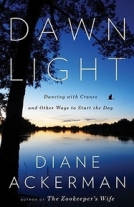“I am what I am not yet.” Maxine Greene taught us that. She spoke those words and put forth those ideas to guide us away from fixedness, from definitive ways of being and doing. The promotion and understanding of such growth then, as learning, is particularly important in education. So, what does it mean to be a teacher not yet? Certainly, it asks us to consider ourselves as always becoming teachers and necessarily challenges the notion that all newly minted teachers be “learner ready,” an all too popular requisite among schools hiring teachers fresh out of teacher preparation.
What does it mean to be learner ready, anyway? Ready for what? Ready for whom? Is there really such a thing? The implication that novice teachers are ready to hit the ground running, fully equipped to “add value” in ways that are “result-oriented” rather than authentically positioned relative to the social, cultural and cognitive needs of the learner is counter to understanding the power of “not yet.” We know more about good teaching today than ever before. But too often, education reform hobbles the work of teachers, new and experienced alike, with demands for “no excuses” teaching rooted in “grit” ideology. There is finality—a fixedness—associated with standardized and measured teaching. I tire at the use of student and teacher performance data to whip up a false sense of urgency. Such tactics prohibit patient problem-solving necessary for teachers to read her students, learn what they need, who they are, who they hope to become and how to connect their loves and lives to the curriculum. This practice easily cripples growth and the perpetual newness associated with teaching. It is unrealistic, unreasonable and antithetical to the idea of being “not yet” teacher. I believe the idea of our unfinishedness as teachers is rarely celebrated and seldom, if ever, held in anticipation of good things to come.
The idea of “not yet” being teacher resonated with a group of graduate teacher education students I recently met with. They knew. Here are some excepts:
I am not deep, differentiated, enthusiastic, serious, flowing, whole. Even though I am not these things yet, the fact that I have identified them means that I am! In a way, I have a part of these things inside me. Just having a tiny bit means that I am not just that, but that I have the chance to become them wholly. (Teacher, 2 years)
So I am just plain—that’s what I am right now—a new struggling teacher, nearly drowning at times, managing a household of six children (one with disabilities), and somehow learning to become a teacher to the 21 other kids I have now and trying so hard to become that teacher I envision who has everything together and inspires all those around her—but I’m not there just yet—always aiming to become better than before, not there yet. (Teacher, 1st year)
I constantly observe. I will always accept feedback. I will always find a new level to rise to. I’ll always be present in my own teachable moments and never stop looking for that teachable moment with others. Teaching is an art. And I am an artist. (Teacher, 6 years)
I am a teaching student who is learning the ropes from other teachers. I am becoming better thanks to teachers in my classes as well as cooperating teachers. It would be very hard to convince me to change my career path. (Pre-service teacher)
These poetic voices of teachers embrace and welcome their unfinishedness. We should listen.




